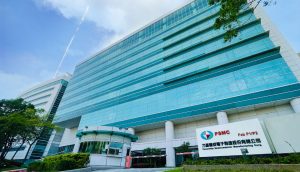Popular Keywords
- About Us
-
Research Report
Research Directory
Semiconductors
LED
Consumer Electronics
Emerging Technologies
- Selected Topics
- Membership
- Price Trends
- Press Center
- News
- Events
- Contact Us
News

According to UDN News, Taiwan's semiconductor foundry, Powerchip Semiconductor Manufacturing Corporation (PSMC), is planning to establish a 12-inch wafer plant in Japan, with Mie Prefecture emerging as a probable location. This facility will be part of a burgeoning semiconductor hub that links up wi...
News

As reported by CNA, the Hsinchu Science Park Bureau(HSPB) is overseeing the expansion project for the Longtan Science Park in Taoyuan, which is essential for advanced manufacturing processes with nodes of 2 nanometers and below, a critical need for TSMC. The project has sparked social controversy, l...
News

On October 11th, Amkor announced the official opening of its factory located in the Yen Phong 2C Industrial Park in Bac Ninh Province, Vietnam. The new facility, occupying 57 acres, is set to become Amkor's largest, with an investment of approximately $1.6 billion by 2035. The factory primarily focu...
News

TSMC is set to conduct an investor meeting on the 19th, with Morgan Stanley, UBS, and Bank of America Securities releasing their latest reports ahead of the event. These reports highlight five main areas of interest: 1. Q4 Operational Outlook 2. Future Gross Margin Trends 3. Potential Adjustmen...
News

As reported by The Wall Street Journal today, Taiwan Semiconductor Manufacturing Company (TSMC) is poised to secure an additional one-year exemption from the United States. TSMC's semiconductor facility in Nanjing, China, is expected to continue operations in the "foreseeable future" as long as sign...